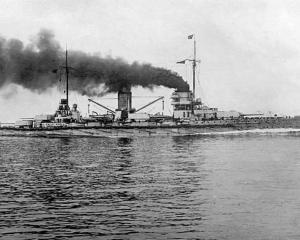If you do the crime, you must do the time and such policies are paying off in the United States.
In 1976, American researcher Robert Martinson declared that "the history of corrections is a graveyard of abandoned fads".
In the United States, this has certainly proven true.
Its federalist political system has allowed each state to function like a policy laboratory, with lawmakers experimenting with different crime-control strategies to see what is most effective.
For example, in the first part of the 20th century, many state lawmakers embraced the "medical model" of crime by replacing punishment with treatment, changing the name of prisons to "correctional facilities", and referring to offenders as "clients" instead of "inmates".
Such humane treatment was heralded by academics, practitioners, and liberal policymakers who had long decried the punitive nature of the American penal system.
However, after much analysis, researchers made a startling discovery about the rehabilitation approach: it did not work.
Crime actually increased during the rehabilitation era, and offenders who had been treated and released were often the first to reoffend.
Not surprisingly, the policy pendulum in many states soon began to swing the other way.
Lawmakers redirected resources back into traditional criminal justice institutions and implemented laws that emphasised punishment over treatment.
Two decades later, the results are once again surprising: the traditional approach works.
Not only has crime plummeted since the mid-1990s, but victimisation rates among the most vulnerable groups (e.g., women, ethnic minorities, adolescents, and the elderly) have substantially improved.
Moreover, in just 15 years, crime went from being a top public concern to not even registering on public opinion poll surveys.
So, what accounts for these results? With the experimentation over the last century, lawmakers - and some (but not all) academics - have been convinced of two things.
First, contrary to the beliefs of most criminologists and psychologists, crime is not a disease.
Unlike the present H1N1 swine flu virus currently making its way around the globe, criminality cannot be transferred through casual contact.
There is no cure for crime, and no amount of psychological counselling, hormone therapy, or genetic engineering can produce a society that is safe from its effects.
Moreover, crime is not a by-product of a dysfunctional social environment or impoverished economic state.
Children who suffer from abuse, neglect, or poverty are not doomed to a life of crime, nor are children from wealthy, healthy families destined to be model citizens.
Common sense and a plethora of examples dispute both hypotheses.
Instead, American lawmakers have rediscovered this historic truth: crime occurs when individuals exercise their free will to make choices that are influenced by motive and opportunity.
All of Western civilisation affirms that people are free moral agents, able to choose between right and wrong.
Moreover, our greatest philosophers remind us that the strong are inclined to prey upon the weak unless they control themselves or are controlled by others.
So, what is a civilised society to do? First, it should encourage the development of morality and virtue so that children develop good self-control.
Government can facilitate this development by supporting family units and by denying criminals the opportunity to terrorise communities and prey upon children who are vulnerable and weak.
Second, lawmakers should reduce the motives of criminals by increasing the consequences for bad behaviour.
If the benefits of crime outweigh the consequences of getting caught, then society offers the offender no incentive to give up his life of crime. If, however, society alters the consequences or punishment of crime so that it no longer results in a net benefit, then the average offender will cease offending.
To put it more bluntly, if you increase the time, you decrease the crime.
Nonetheless, not all offenders are persuaded by an increase in punishment.
Research from the last four decades has shown that a few serious offenders remain incorrigible no matter what the cost of crime might be.
Consequently, lawmakers have responded by implementing three-strikes laws and other policies that isolate these offenders for longer periods of time.
However, the percentage of offenders who fall into this category is very small: in California, the most populous state in the nation, the percentage is less than 5%.
For other states, the percentages are even smaller.
Furthermore, research has also shown that increasing the cost of crime does little to sway drug users who are chemically addicted to narcotics.
For these offenders, treatment for chemical dependency, combined with the threat of imprisonment for failure to complete the treatment, is more effective than punishment alone.
For everyone else, the old school approach to crime and justice appears to be working well.
Just last week, Los Angeles County released crime statistics revealing that property and violent crime numbers had dropped yet again.
With county unemployment at 11.5%, this was good news for beleaguered officials.
And, for lawmakers and citizens alike, it was confirmation that the investment in traditional crime-control measures, made nearly two decades ago, continues to pay healthy dividends.
• Jennifer E. Walsh is a professor of political science at Azusa Pacific University in Los Angeles County, California.
She was recently in New Zealand as a guest of Sensible Sentencing Trust and Family First NZ.












